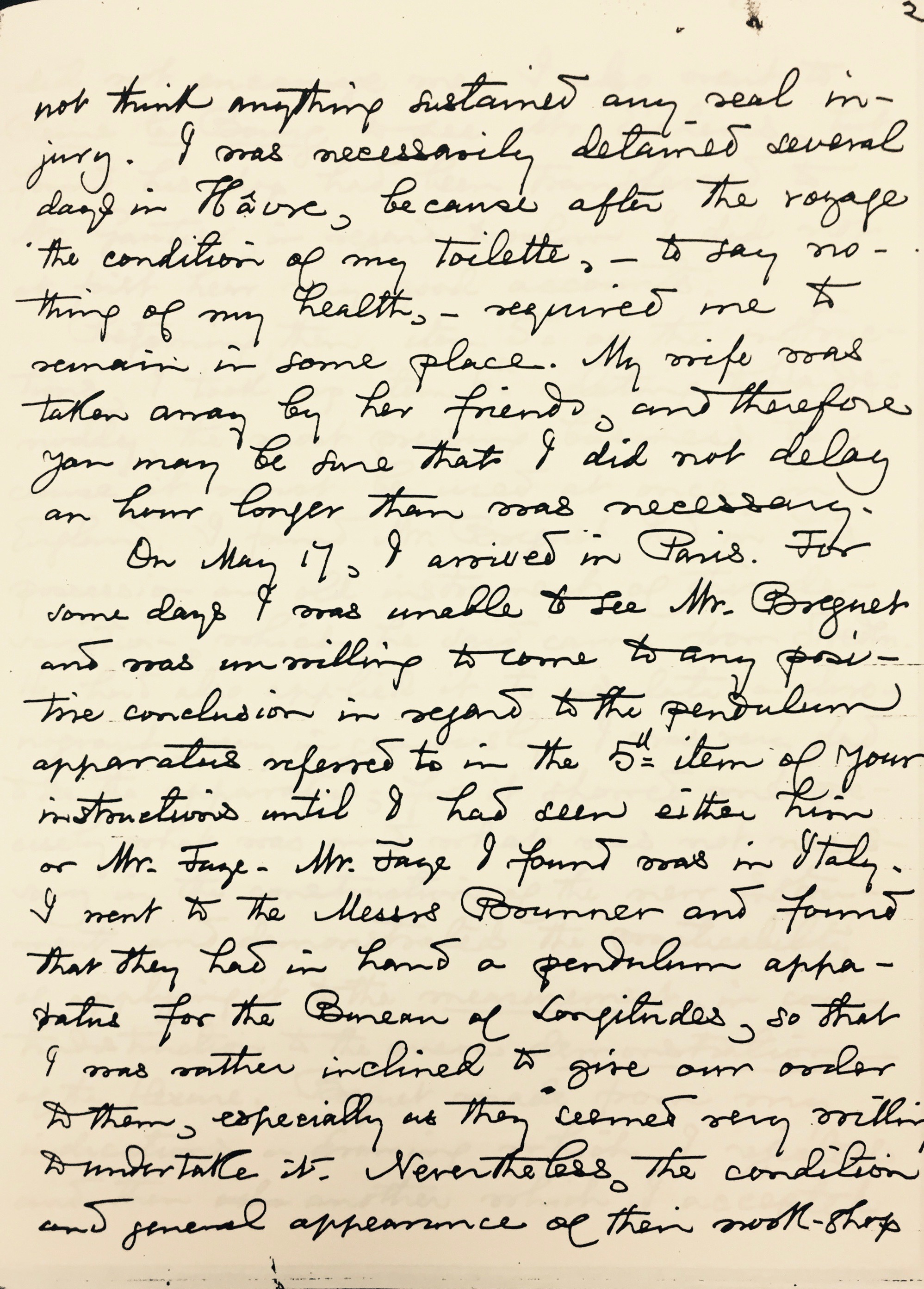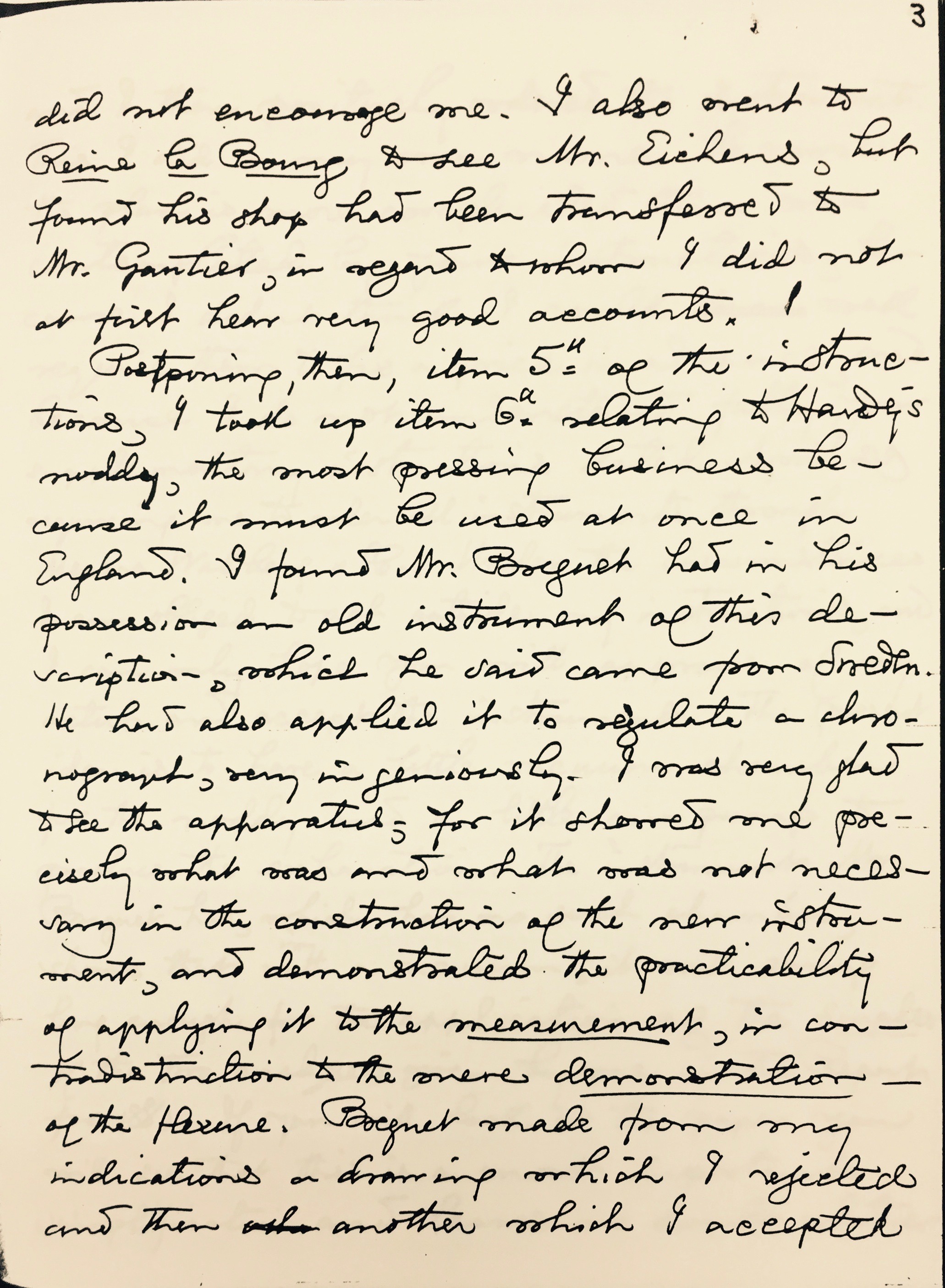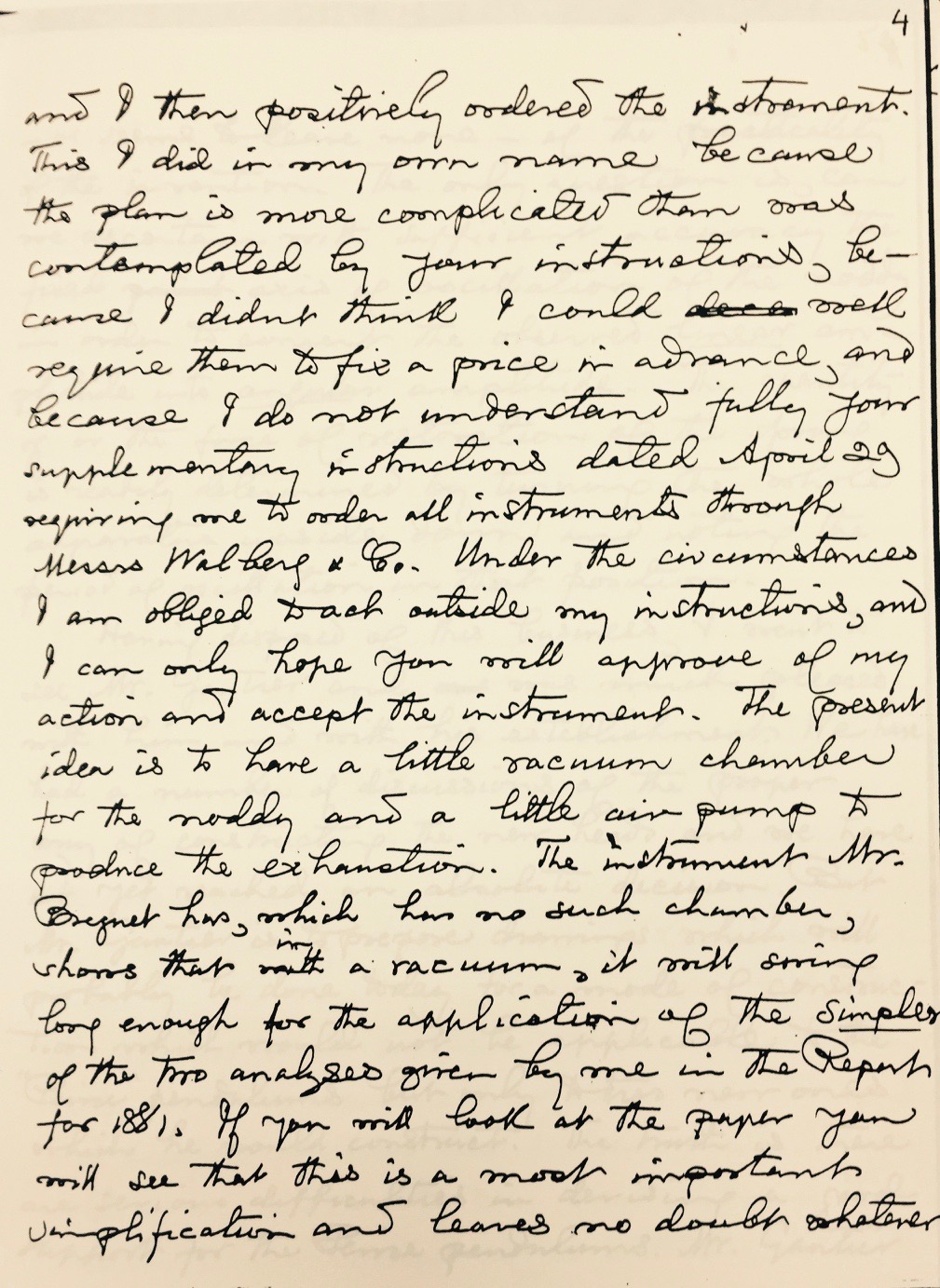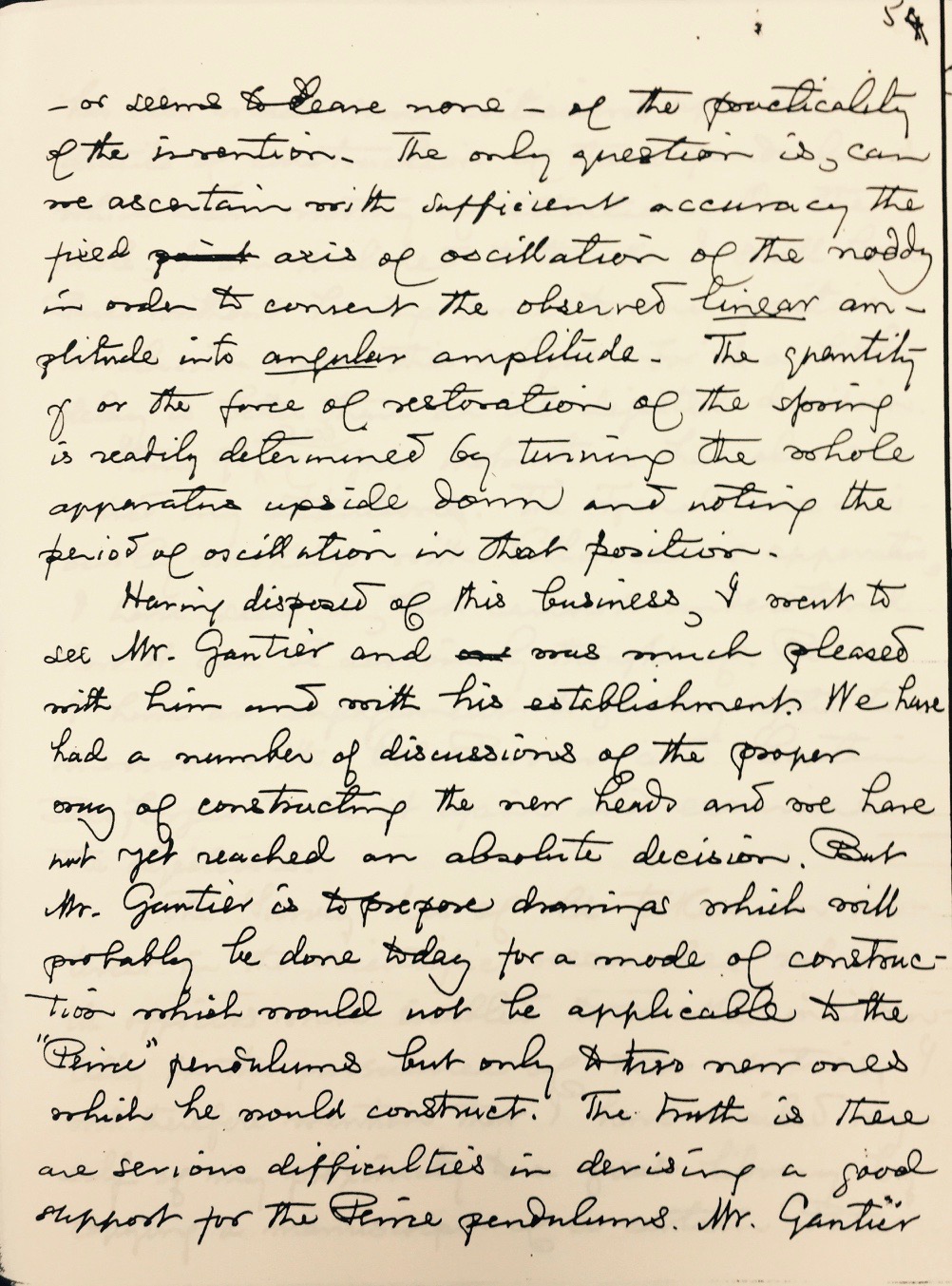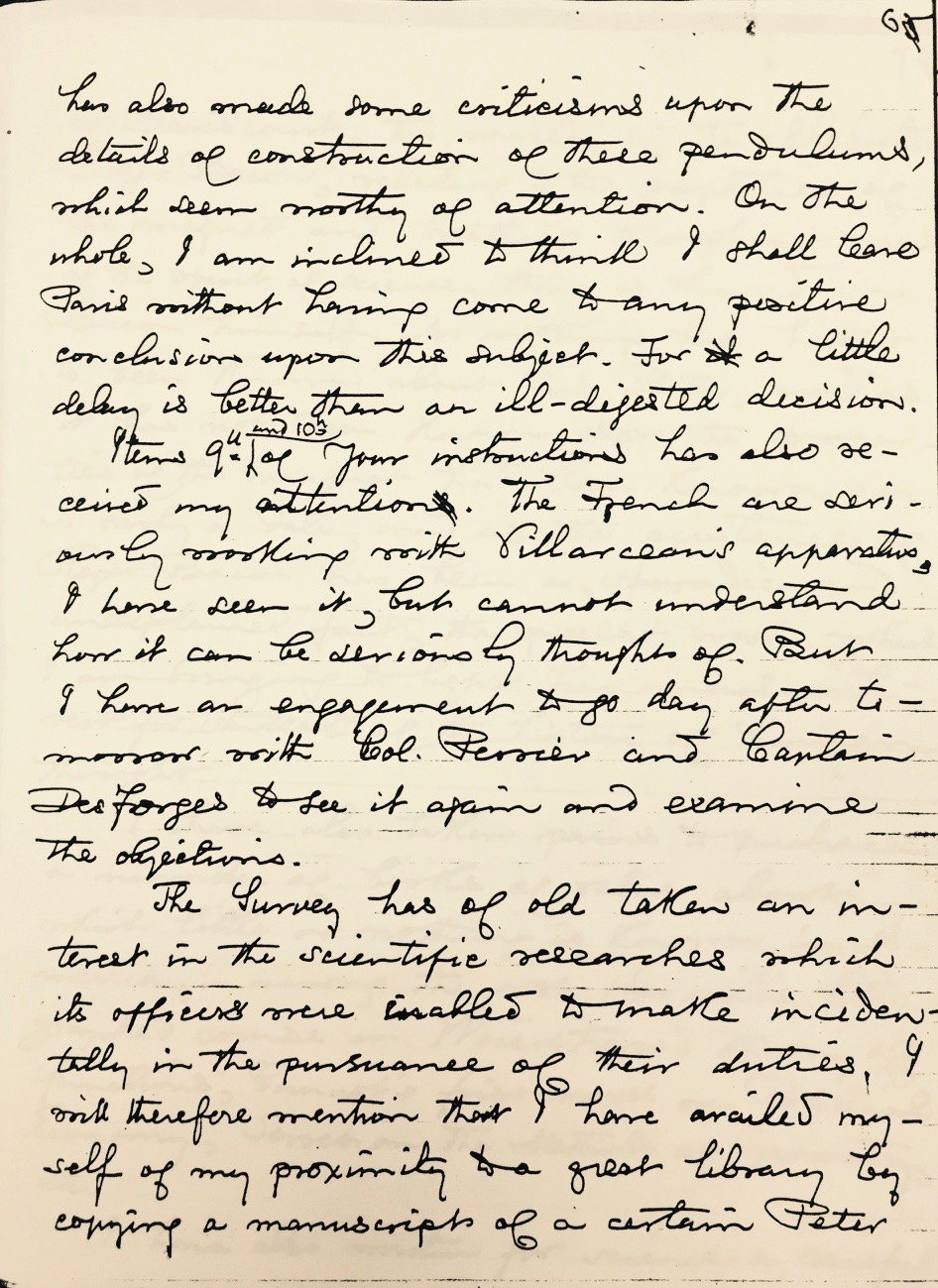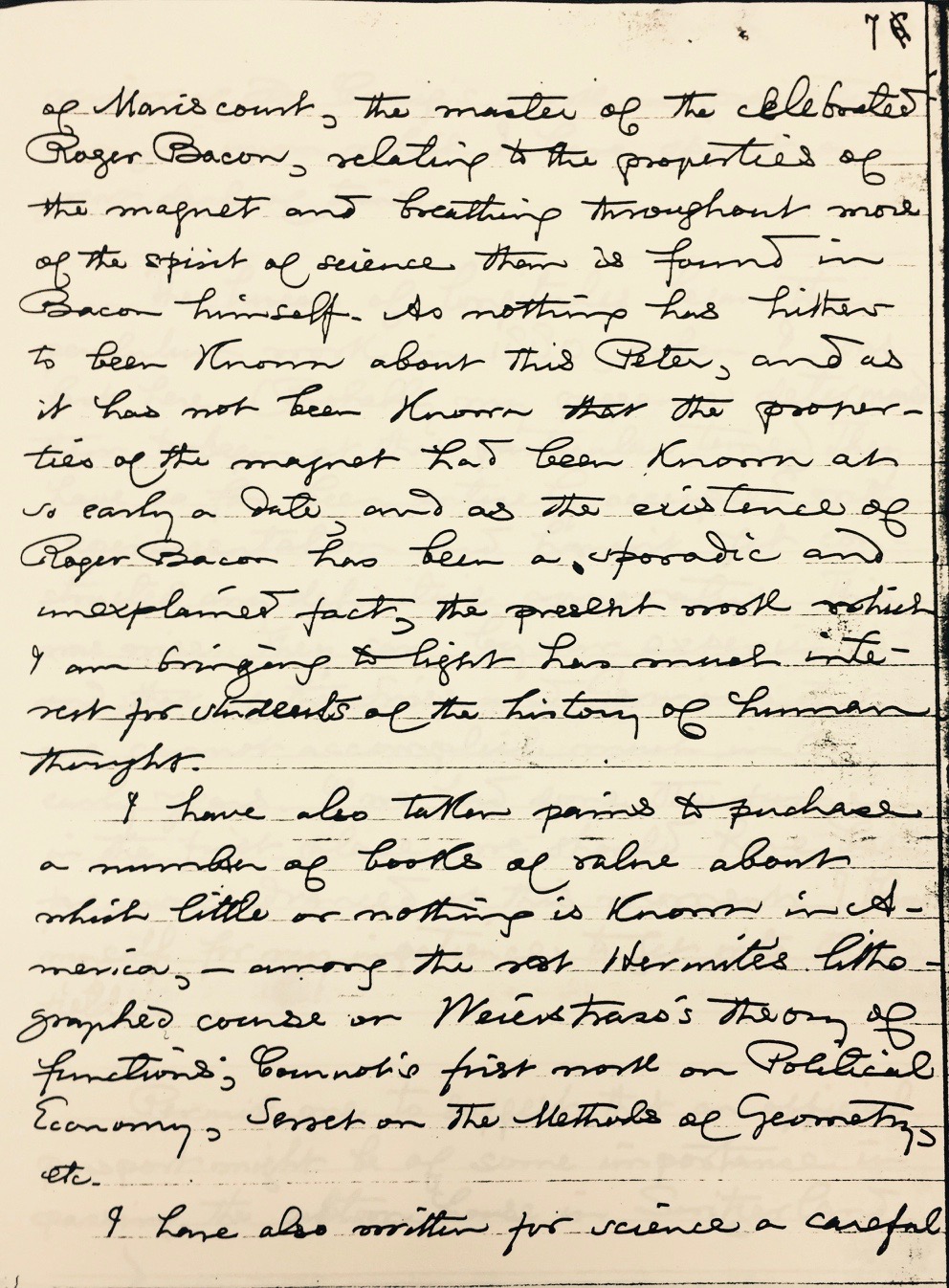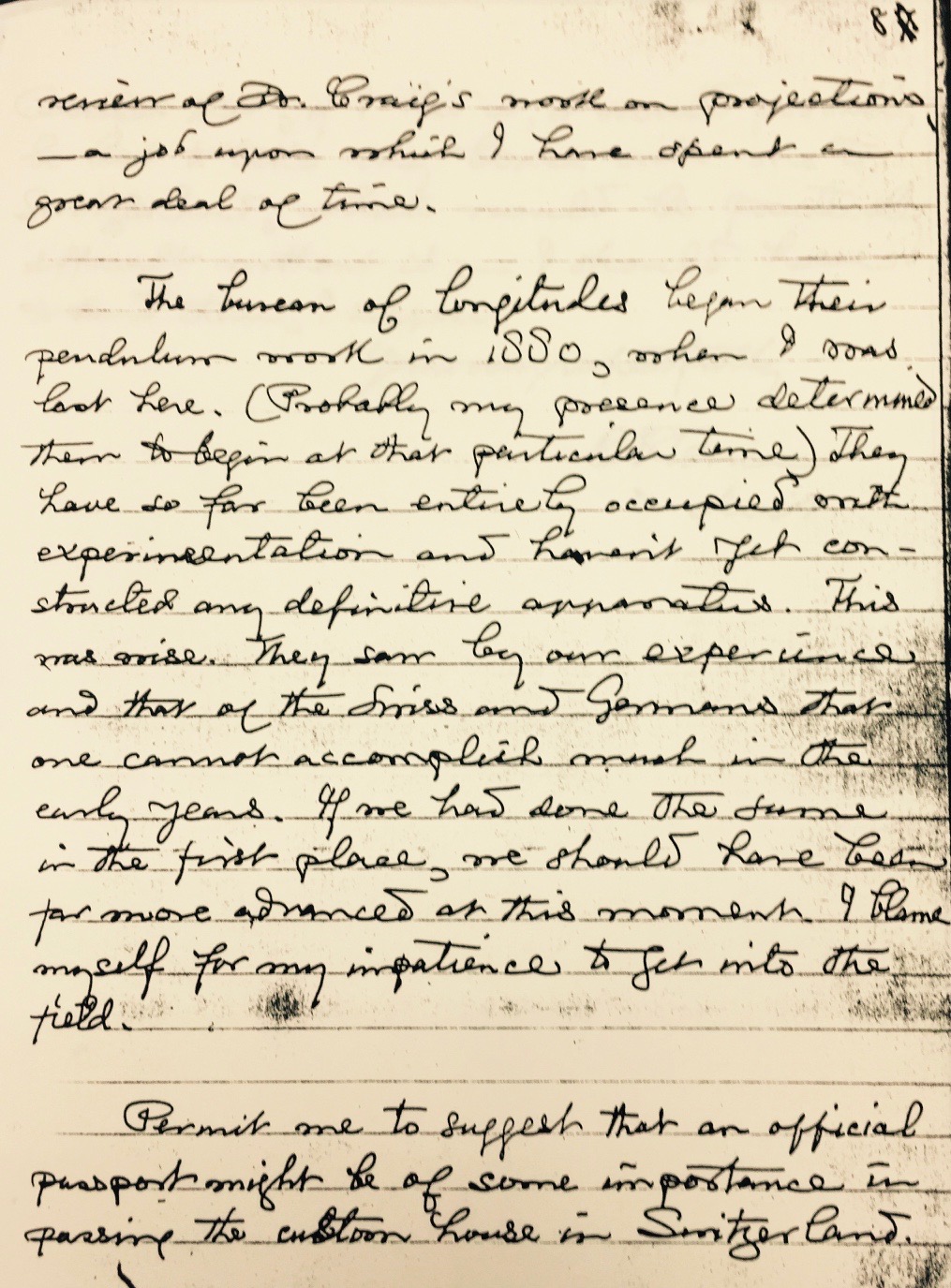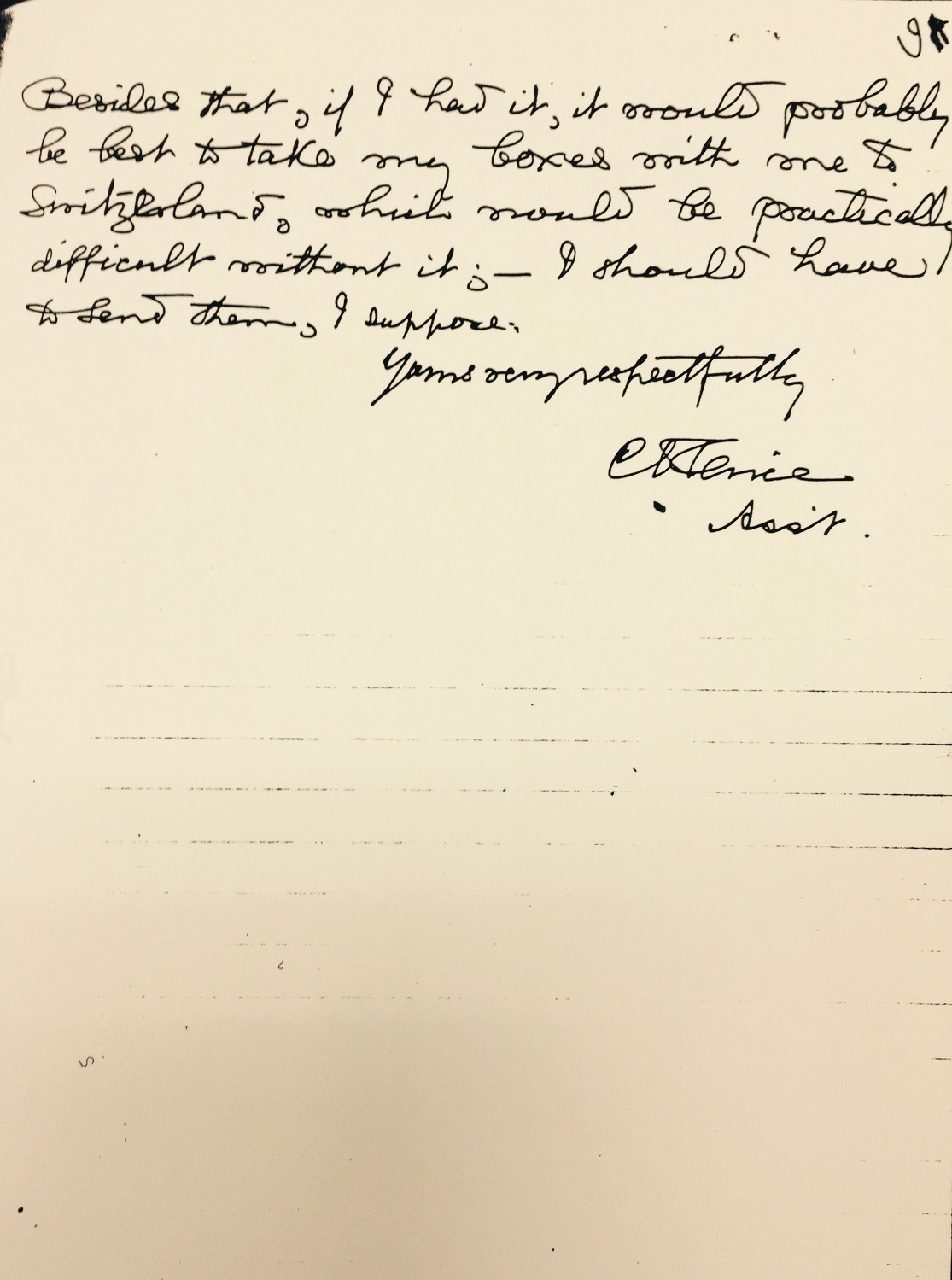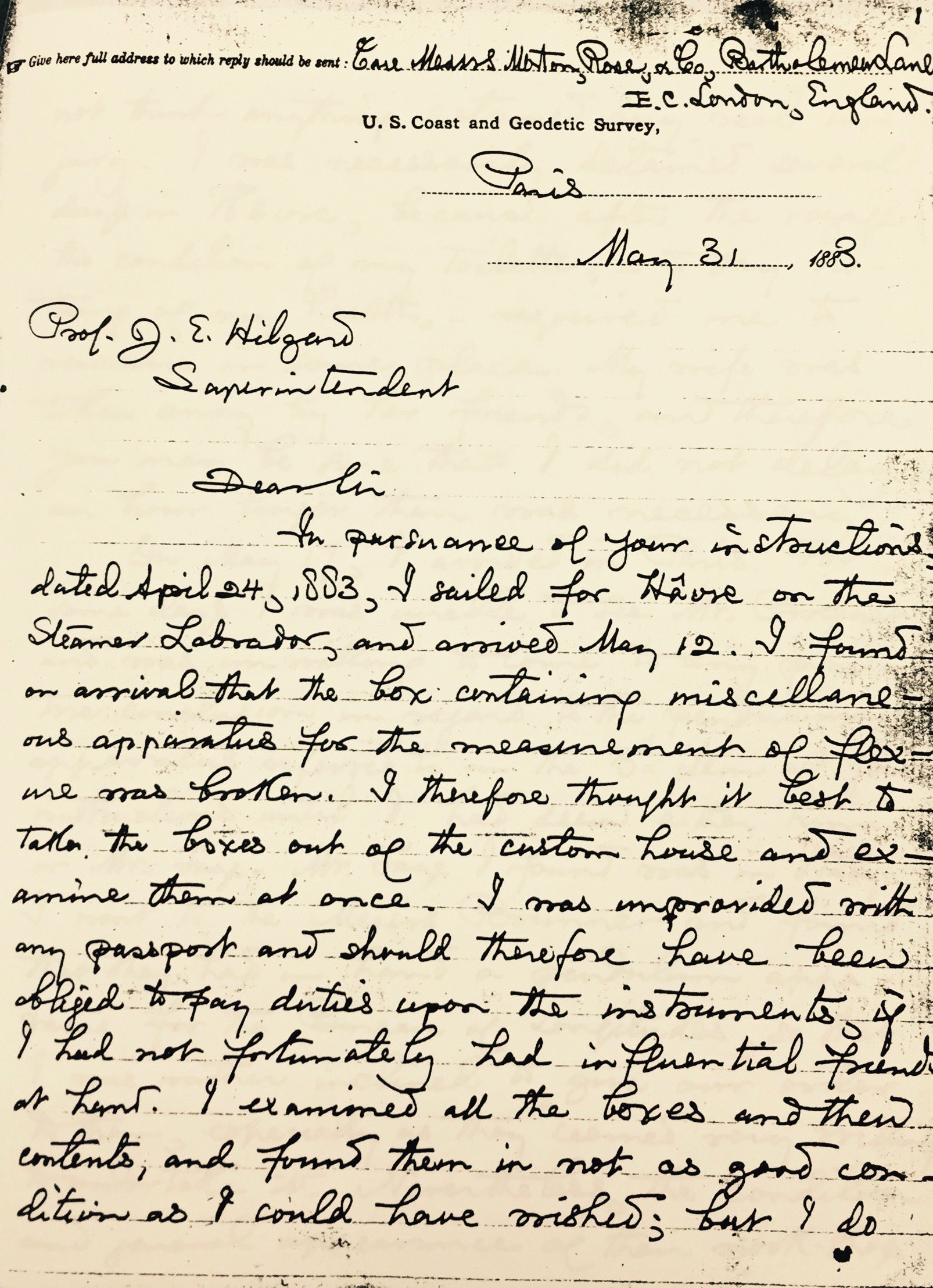
Care Messrs Morton, Rose & Co.
Bartholomew Lane
E. C. London, England
Paris
May 31, 1883
Prof. J. E. Hilgard
Superintendent
Dear Sir,
In pursuance of your instructions, dated April 24, 1883, I sailed for Hâvre on the Steamer Labrador, and arrived May 12. I found on arrival that the box containing miscellaneous apparatus for the measurement of flexure was broken. I therefore thought it best to take the boxes out of the custom house and examine them at once. I was unprovided with my passport and should therefore have been obliged to pay duties upon the instruments if I had not fortunately had influential friends at hand. I examined all the boxes and their contents, and found them in not as good condition as I could have wished; but I do
